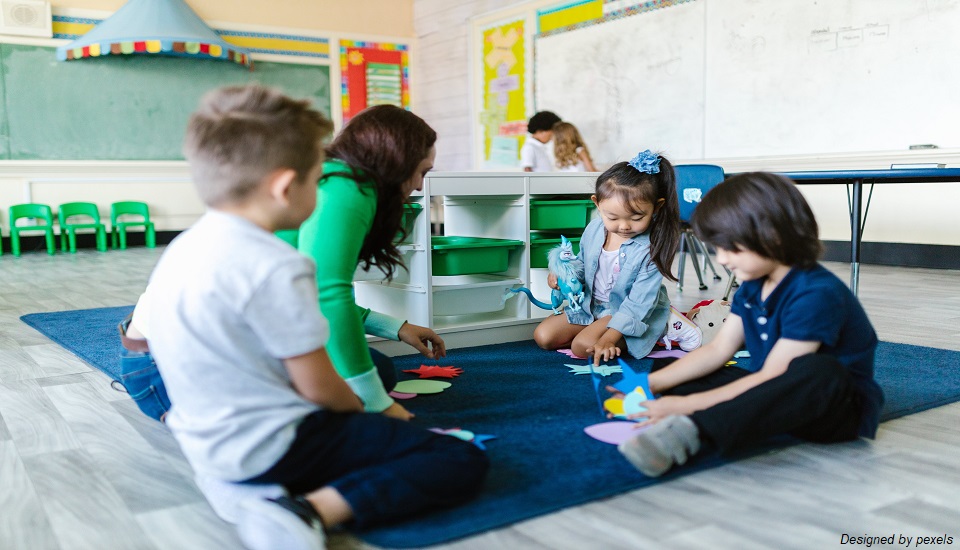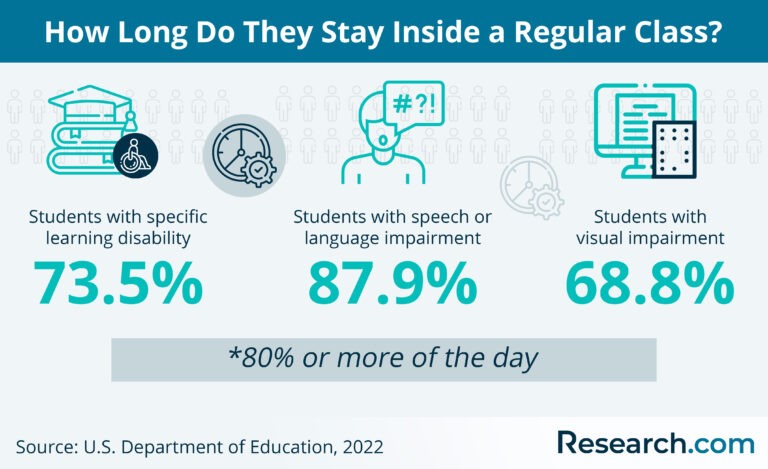Multiple Sensory Integration Activities and Tools Which You Didn't Know is Beneficial For Your Special Education Classroom
1st November 2023

The life of a special educational needs (SEN) child is never easy. On top of that, they also face sensory difficulties, making it more challenging for them to succeed in both their academics and personal lives.
Additionally, most of the time special needs students attend regular classes with other students because most of the parents and teachers are unable to recognize the symptoms of any special needs disorders in students. According to research.com, around 80% of special needs students stay in regular classes.

First of all, it’s very important for every teacher, parent, or even caretaker to recognize and have a clear understanding of how to recognize special needs children and their different sensory needs which can be learned better via courses like online Master of Arts in Education with Special Education.
You might be wondering, even after finding out about the different sensory needs of students how you can give them proper support. Then, no need to worry, because in this blog post, we will be sharing multiple sensory integration activities that you can incorporate in your classroom for their learning and overall development.
Before moving to the topic, can we ask you a question? Do you follow us on Social Media? We regularly share upgraded educational content, tips, feedback, and more. Check us out by clicking the profiles here - Facebook / Twitter / LinkedIn / Pinterest / Instagram / YouTube
So, without any further delay, let’s get started.
Sensory Strategies for The Classroom
Each child possesses unique sensory needs. However, by incorporating sensory integration strategies in the classroom, attention and focus can be greatly improved. In the following section, we will share some highly effective tools and strategies that can be implemented in your special education classroom.
1. Disc Cushion
A textured rubber cushion is designed to provide sensory input while sitting. This cushion not only helps children tolerate prolonged sitting but also improves their posture.
2. Frequent Breaks
Providing opportunities for movement breaks should be scheduled throughout the day. These breaks can include brief stretches, getting a drink of water, or engaging in wall push-ups. These activities can help children release energy and maintain focus.
3. Fidgeting Toy
Small handheld toys or fidgets can be provided to children during seated activities. These toys discreetly engage children by allowing them to manipulate and focus their sensory input, thereby improving their attention. However, it is crucial to collaborate with the teacher to establish guidelines and ensure that fidgets do not become distracting for other students.
4. Foot Fidget
A piece of exercise band can be attached to the base of the desk's front legs or a foot fidget attachment can be used. This allows children to engage their busy legs and receive sensory input without causing disruption.
5. Break Box
A box can be created, filled with sensory tools and toys, which students can access during designated times. This break box serves as a resource for children to regulate their sensory needs. Additionally, it can be paired with a sensory tent or corner for added comfort.
6. Cup with a Chewy Spout
A cup with a chewy straw or top can be provided to children who find chewing calming. This simple solution allows them to meet their sensory needs discreetly while staying hydrated.
7. Chewy Necklace
A helpful solution for children with a strong need to chew is a chewy necklace. These necklaces come in various designs and provide a safe and appropriate outlet for chewing.
8. Refreshing Gum
Not all teachers may be open to it, but chewing gum can be beneficial for children who can chew safely and quietly. It has the potential to enhance their focus and attention.
9. Weighted Vest
Using a weighted vest for short periods of time, typically 15-20 minutes, can provide deep pressure input. This input is known to be calming and helpful during transitions or challenging activities.
10. Weighted Lap Pad
Similar to a weighted vest, a weighted lap pad provides deep pressure input that is less noticeable. It can be discreetly used and is suitable for children who seek deep-pressure input.
11. Ball Chair
Some children benefit from using a real ball chair as an alternative seating option. This can enhance their attention and focus. However, it is important to consult the school's occupational therapist to determine if this trial arrangement suits children in the classroom or not.
12. Dedicated Sensory Classroom Space
A dedicated sensory corner can be created in the classroom by using various sensory activities and tools provided. This corner offers a quiet and comfortable space where children can regulate their sensory needs, thereby enhancing their ability to focus and learn.
13. Tactile Brush
If a child is already familiar with the Wilbarger brushing program or receives occupational therapy, they can learn to use a sensory brush on themselves. This particular brushing technique can be quite beneficial in promoting relaxation and maintaining emotional stability before transitioning into different activities.
Supporting Sensory Needs at Home
In addition to implementing sensory strategies in the classroom, it is essential to also support children's sensory needs at home. Courses like online Master of Arts in Education with Special Education can educate parents about the benefits of sensory support.
In order to promote overall well-being and regulate their sensory systems, individuals can incorporate sensory activities into their daily routines. Consider the following suggestions for implementing sensory activities at home:
Physical Activity
Get child involved in physical activities that provide sensory input. Encourage them to jump on a trampoline, climb stairs, squeeze through a fabric tunnel, or try out yoga. These activities can effectively release energy and offer valuable sensory feedback.
Calming and Relaxing Activities
Some children may need calming activities in order to relax after a long day. Consider creating a sensory tent, playing soft music, or providing a cozy spot such as a rocking chair or hammock for your child to unwind and destress.
Every child's sensory needs can vary from day to day. It is crucial to observe and adapt sensory activities according to their individual preferences and responses.
Incorporate Sensory Tools and Activities For the Betterment of SEN students
To support the learning and overall development of children with different sensory needs, every teacher, parent, and even caretaker should be aware of utilizing different sensory tools and activities. Teachers, parents, or caretakers who have pursued courses like online MA in Education with Special Education, know really well how to support children with different sensory needs.
However, in this blog post as well, we have shared multiple sensory tools and activity ideas that you can incorporate to support the different needs of children with different sensory needs. Additionally, supporting sensory needs at home through sensory activities contributes to your child's overall well-being. Embrace the uniqueness of every child and celebrate their potential through the power of sensory integration.
We believe education should be accessible for everyone. That’s why we don’t charge for our blogs. Find the right course that will help you in your career with us, contact us at - +6621055721. You can mail us at act@asiancollegeofteachers.com

